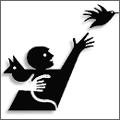Lindsay Wildlife Experience

Lindsay Wildlife Experience, formerly known as Lindsay Wildlife Museum,[1][2] is a family museum and wildlife rehabilitation center in Walnut Creek, California. The museum is one of the oldest wildlife rehab centers in the United States, and a popular family museum in the San Francisco East Bay Area. Founded in Walnut Creek in 1955, the museum’s programs “connect people with wildlife to inspire responsibility and respect for the world we share.” The museum houses an interactive discovery room for children, a pet education section with small domestic animals, and rotating natural history and art exhibits. The on-site wildlife rehabilitation center treats nearly 6,000 injured or orphaned wild animals each year.
History
Lindsay Wildlife Museum was founded in 1955 by Alexander Lindsay as the Diablo Junior Museum. It became the Alexander Lindsay Junior Museum in 1962 after Alexander Lindsay died at 44. In 1965 it moved to a water-pump house in Larkey Park in Walnut Creek. In 1970 the museum started the first formal wildlife rehabilitation program in the United States. In 1986 the City of Walnut Creek ended operations and the museum became an independently operated not-for-profit organization. The next year "Junior" was dropped from the title, making it The Lindsay Museum. In 1993 the museum moved to a newly built 28,000-square-foot (2,600 m2) museum near the old pump house. Three years later the name was changed to Lindsay Wildlife Museum. In recent years, the museum has added a number of major new exhibits. Wildlife Hospital Behind the Scenes lets visitors watch a live veterinary procedure at the hospital through a large, one-way window. At Raptors visitors can soar virtually over Mount Diablo and measure their armspan against raptors' wingspans. At Hive Alive! and Hive to Honey~Honey Bees and Beekeepers at Work visitors can watch thousands of live bees and their queen and learn what jobs different bees do. In fall 2013, the museum opened the new exhibit The Burrow where visitors can go "underground" to discover the world of wildlife beneath their feet. The museum changed its name to "Lindsay Wildlife Experience" in 2015.[1][2]
Hospital
The wildlife rehabilitation hospital at the museum receives up to 6,000 California native wild animal patients every year. The hospital is a pioneer in wildlife rehabilitation and many now-standard protocols across the country were developed here. Hospital staff and volunteers treat animals that have been poisoned, struck by automobiles, fallen from trees during trimming, and injured by other often human-related activities. They also care for orphaned young, both onsite and at the homes of specially trained volunteers. After being treated, an animal is released back into the wild. If it cannot be safely released it may join the museum as an "animal ambassador." As many animals brought to the hospital are cat-caught, the museum strongly encourages visitors to keep their cats indoors.
References
- 1 2 "Lindsay Wildlife Experience Consulting Services Agreement" (PDF). June 11, 2015.
Lindsay Wildlife Museum has been renamed Lindsay Wildlife Experience to better align its name to its mission of 'Connecting people with wildlife to inspire respect and responsibility for the world we share.'
- 1 2 "Learn More About Us - Lindsay Wildlife Experience". Retrieved 2015-08-11.
In 2015 the name was changed to Lindsay Wildlife Experience to better illustrate what the center means to the community and visitors.
External links
Coordinates: 37°55′25″N 122°04′33″W / 37.9235°N 122.0757°W